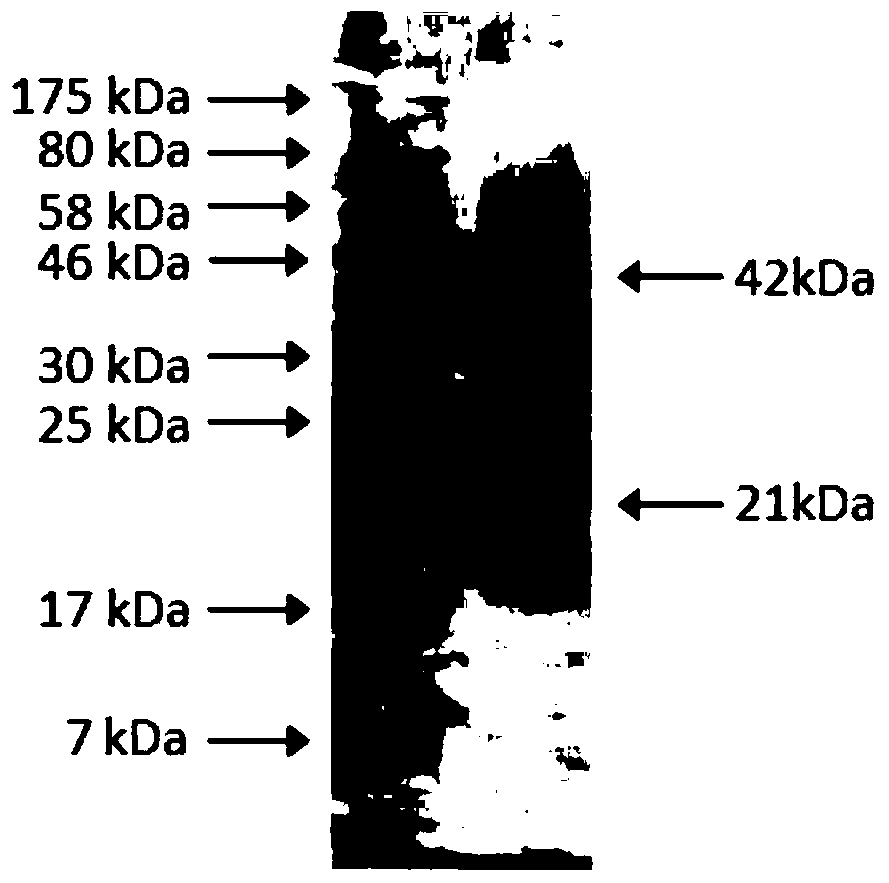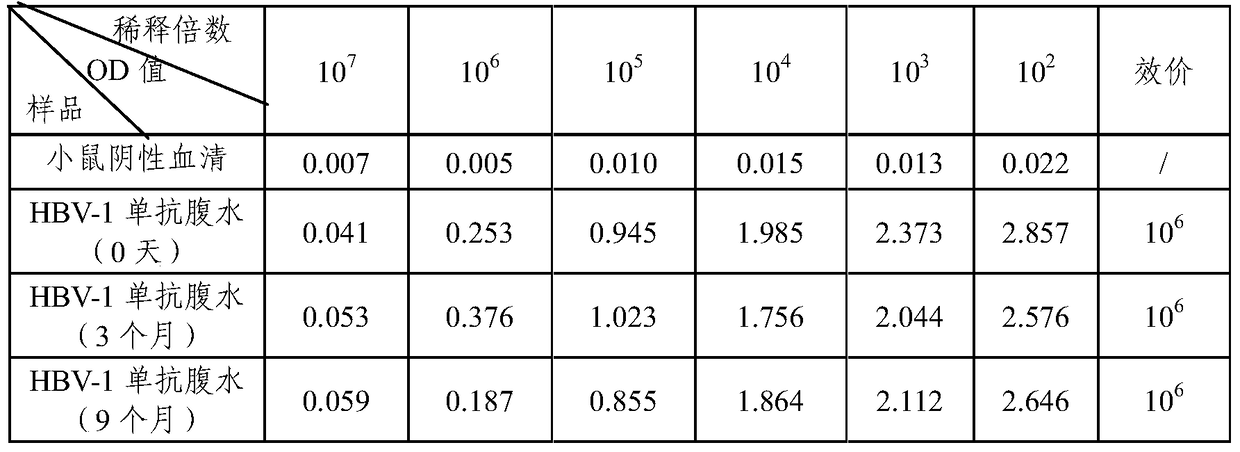Hepatitis B virus surface antigen monoclonal antibody and its application
A hepatitis B virus and monoclonal antibody technology, applied in the field of immunology, can solve the problems of difficulty in obtaining human hepatitis B surface antibodies, and achieve good virus-specific effects
- Summary
- Abstract
- Description
- Claims
- Application Information
AI Technical Summary
Problems solved by technology
Method used
Image
Examples
Embodiment 1
[0030] Embodiment 1 immunogen preparation and animal immunization
[0031] (1) The p5GK3 plasmid was constructed by molecular cloning technology, and the uracil synthase (orotidine-5-phosphate decarboxylase) gene Ura3 of Hansenula was knocked out by electrotransformation to obtain the corresponding uracil deficiency After the Hansenula strains were selected, the constructed uracil-auxotrophic Hansenula strains were screened through the auxotrophic medium. The HBsAg expression plasmid pDKXMPHT was constructed by molecular cloning technology, transformed into uracil auxotrophic Hansenula, and the Hansenula strains capable of expressing recombinant HBsAg were screened.
[0032] (2) Take the recombinant Hansenula working seed batch bacterial strain expressing the surface antigen of hepatitis B virus constructed by DNA recombination technology, carry out three-stage fermentation through Erlenmeyer flask, seed tank and production tank, and harvest the bacteria.
[0033] (3) Break u...
Embodiment 2
[0039] Example 2 Cell Fusion and Strain Construction
[0040] (1) Resuscitate and culture the SP2 / 0 cell line before cell fusion, expand the culture 3 days before fusion, remove RPMI1640 cell culture medium (Gibco) 1 day before fusion, and add culture medium again to prepare SP2 / 0 cells.
[0041] (2) The immunized mice were sacrificed, and the mouse splenocyte suspension was prepared according to conventional methods.
[0042] (3) Add an appropriate amount of incomplete IMDM culture medium (Gibco) according to the counting results of splenocytes and SP2 / 0 cells, shake and mix the SP2 / 0 cells, and pipette the splenocytes evenly. Then the splenocytes and SP2 / 0 cells were combined at a ratio of 1:2 in a 50ml centrifuge tube and mixed.
[0043] (4) Add incomplete IMDM culture medium to 50ml, centrifuge for 5 minutes, and pour out the supernatant. Lightly tap the bottom of the fusion tube to loosen and evenly precipitate the cells, and place the centrifuge tube in a 37°C water ba...
Embodiment 3
[0050] Example 3 Monoclonal Antibody Cell Line Ascites Preparation and Antibody Titer Detection
[0051] Resuscitate the frozen hybridoma cells obtained in Example 2 according to conventional methods, and cultivate them. When the cells cover more than 50% of the bottom of the 25ml cell culture bottle, BALB / c mice can be inoculated intraperitoneally according to conventional methods, and the ascites can be collected regularly. HBV-1.
[0052] The hepatitis B vaccine stock solution is diluted with 0.01M PBS1:60, 100 μl / well is coated with an enzyme-labeled plate, overnight at 4°C, and the antibody titer of the hepatitis B virus surface antibody ascites HBV-1 secreted by the hybridoma cells of the present invention is detected, and the antibody is detected OD value / negative serum test OD value (calculated as 0.05 if less than 0.05) is greater than or equal to 2.1, the antibody result is positive, and the dilution factor corresponding to the antibody at this time is the antibody t...
PUM
 Login to View More
Login to View More Abstract
Description
Claims
Application Information
 Login to View More
Login to View More - R&D
- Intellectual Property
- Life Sciences
- Materials
- Tech Scout
- Unparalleled Data Quality
- Higher Quality Content
- 60% Fewer Hallucinations
Browse by: Latest US Patents, China's latest patents, Technical Efficacy Thesaurus, Application Domain, Technology Topic, Popular Technical Reports.
© 2025 PatSnap. All rights reserved.Legal|Privacy policy|Modern Slavery Act Transparency Statement|Sitemap|About US| Contact US: help@patsnap.com



